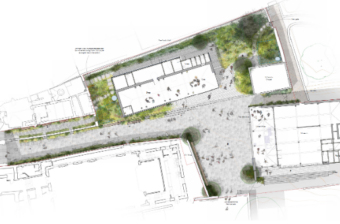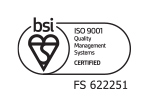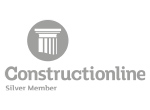Synergy News & Blog: Guildford Office
CDM Regulations 2015 – The Impact on the Client
The proposed Construction (Design and Management) Regulations 2015, herein after referred to as the CDM Regulations 2015, came into force on 6th April 2015. On this date, the CDM Regulations 2007 were revoked with immediate effect, thus requiring the client to prepare in advance, for the duty holder changes required under the new Regulations. The CDM Regulations 2015 enforce the most significant changes required of the construction industry as a whole in 20 years, in that additional duties shall be required for all construction work, regardless of size, duration and complexity.
The Objectives of the CDM Regulations 2015:
The new CDM Regulations 2015 have introduced more rigorous controls on to all construction projects to address the growing disparity between well run and controlled large scale projects, (which have a lower accident rate), and those which currently fall under the radar, where construction work takes less than 30 days to complete, (where there is a noticeable increase in accidents and ill-health issues). The HSE has identified that the smaller projects are often not well planned and management do not adequately manage, monitor and control safety in design or construction.
The Impact of the CDM Regulations 2015:
Notification Requirements
The HSE has significantly reduced the requirement for Clients to notify them of construction projects by modifying the criteria to 30 working days, plus 20 persons working simultaneously at one time on the construction project. The 500 person day rule still applies. It is expected that the majority of the construction work presently undertaken, will fall outside of the former criteria and therefore not be notifiable to the HSE as a construction project.
It is most likely that the 500 person day rule will be a greater consideration for many clients, in future, when planning the work on their premises, as to whether the HSE need to be notified.
Single Contractor Projects
The CDM Regulations 2015 shall require all contractors to provide a specific Construction Phase Health and Safety Plan for the proposed work, regardless of size, duration or complexity.
The Plan shall address and record the health and safety arrangements, site rules, communication channels as well as specific measures for managing high risk activities contained within Schedule 3 of the new Regulations. The particular risks include working at height, chemical or biological hazards, electricity, earthworks and erecting or dismantling of prefabricated components.
The Plan should be relevant to the work and should not include generic risk assessments which may cloud the understanding of what is needed to properly manage the construction phase of the project.
The impact on Clients where they themselves are the single contractor undertaking construction work, will be that on every project, a Construction Phase Health and Safety Plan must be completed prior to the commencement of any works.
Where the Client appoints a single Contractor to carry out the work on their behalf, it shall be the duty of the Client to ensure that the Contractor has properly completed a Construction Phase Health and Safety Plan, ensuring that the minimum standard of the Regulations has been satisfied.
Where the Client contracts itself, or another department within its organisation and appoints another contractor to work on their behalf in carrying out and completing construction works, then the rule, Appointing of Two or More Contractors, applies.
Appointment of Two or More Contractors
Where it is reasonable to assume, at the conception of the project, more than one contractor is required to carry out the works, the CDM Regulations 2015 shall require the Client to formally appoint two duty holders.
When confirming the number of contractors working on each project, consideration should be given to those contractors employed by the client, who sub-contract their work through their own supply chain networks. This should be confirmed at the outset in order to ensure that the Regulations are satisfied. The two duty holders are:
- Principal Designer
- Principal Contractor
The role of the Principal Designer is essentially to oversee the pre-construction and design process, with the objective to remove or reduce the foreseeable risks of ill health and safety of all persons likely to be affected by the construction work as a whole.
The Principal Designer must consider those persons who construct, use, maintain, repair and ultimately decommission or demolish the building or structure. The duty holder must also consider the persons not directly involved, but who may be at risk for the life-cycle of the project.
It shall be the Principal Designer’s duty to ensure that he prepares and provides all of the pre-construction information to the designers and contractors, including the design risk assessment for the works; the communication of this information provided in sufficient time to enable the other duty holders to plan and prepare their work.
The Principal Designer must commence the Health and Safety File, right at the start of the project, incorporating all of the relevant information required for the project, to satisfy the minimum standard set out in Appendix 4 of the CDM Regulations 2015.
The Health and Safety File should be updated as the project progresses, providing such information, current at the time of the construction phase, ready and available for inspection and where required handed over to the Client in its most up-to date condition at any time.
The role of the Principal Contractor is much the same as it is under CDM Regulations 2007, but shall be required to take on the role of Principal Designer, should the pre-construction Principal Designer, originally appointed be disengaged from his duty by the Client – as an example this is likely to occur on design and build projects.
It shall be the duty of the appointed Principal Designer, whoever holds the duty at the end of the project, to complete the Health and Safety File and hand over to the Client.
The impact on the Client shall be that they shall formally appoint a Principal Designer for any construction work where there will be more than one contractor working. The appointment shall be made at the conception of the project, or where scope creep requires another contractor on the project. The Principal Designer is required to be appointed after 6th April 2015, when the Regulations came into force.
Transitional Arrangements:
The CDM Regulations 2015 have defined transitional provisions for adopting the new Regulations.
- Where the project is likely to have two or more contractors working and the construction phase has not started by 6th April 2015, the Client must appoint a Principal Designer as soon as possible to undertake their duties.
- Where the project is likely to have two or more contractors working on a project and the construction phase has started prior to 6th April 2015, the Client must appoint a Principal Contractor as soon as possible after this date. The Principal Contractor shall take on the responsibility of producing and handing over the Health and Safety File.
- Any designer undertaking design work, during the construction phase of the project shall bring to the attention any residual risks in the designs to the Principal Contractor. Essentially, the Principal Contractor assumes the role of the Principal Designer, until the end of the project.
- Where a CDM Co-ordinator has been appointed prior to 6th April 2015, the Client must appoint a Principal Designer before 6th October 2015, unless the project is completed prior to this date, in which the CDM Co-ordinator can carry on and complete his duty.
- Where a single contractor is working on a project prior to 6th April 2015, the contractor shall be required to provide a suitable and sufficient Construction Phase Health and Safety Plan as soon as practicable, (regardless of time, money and effort), after this date.













